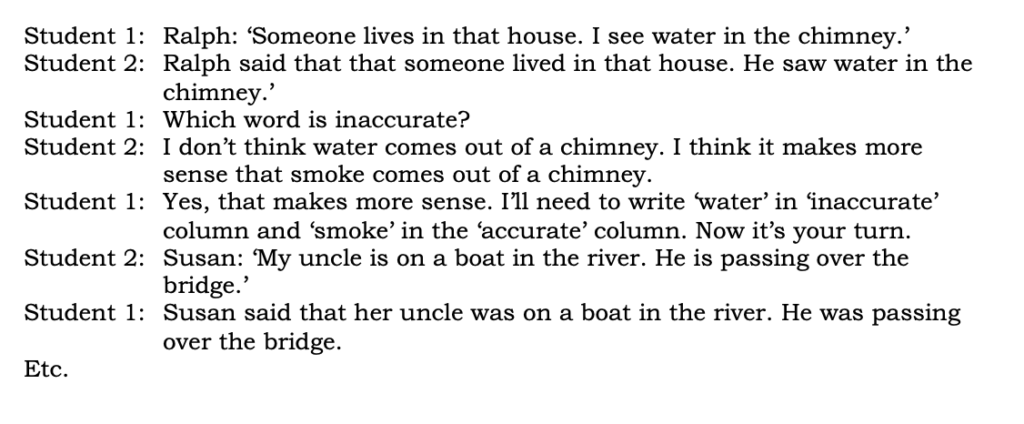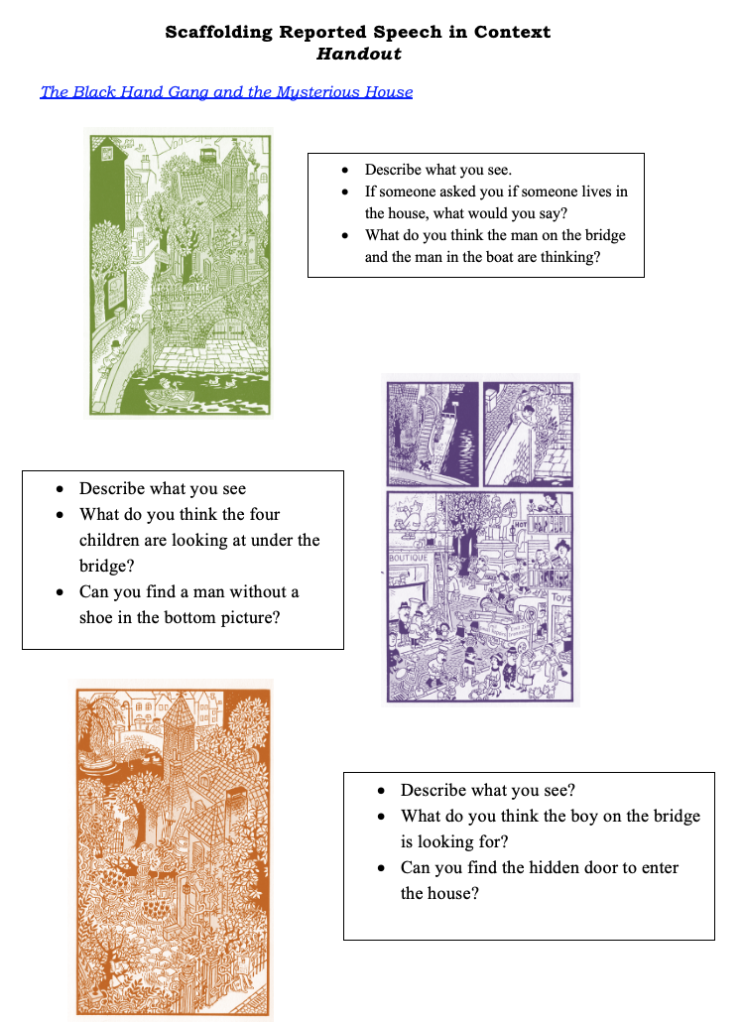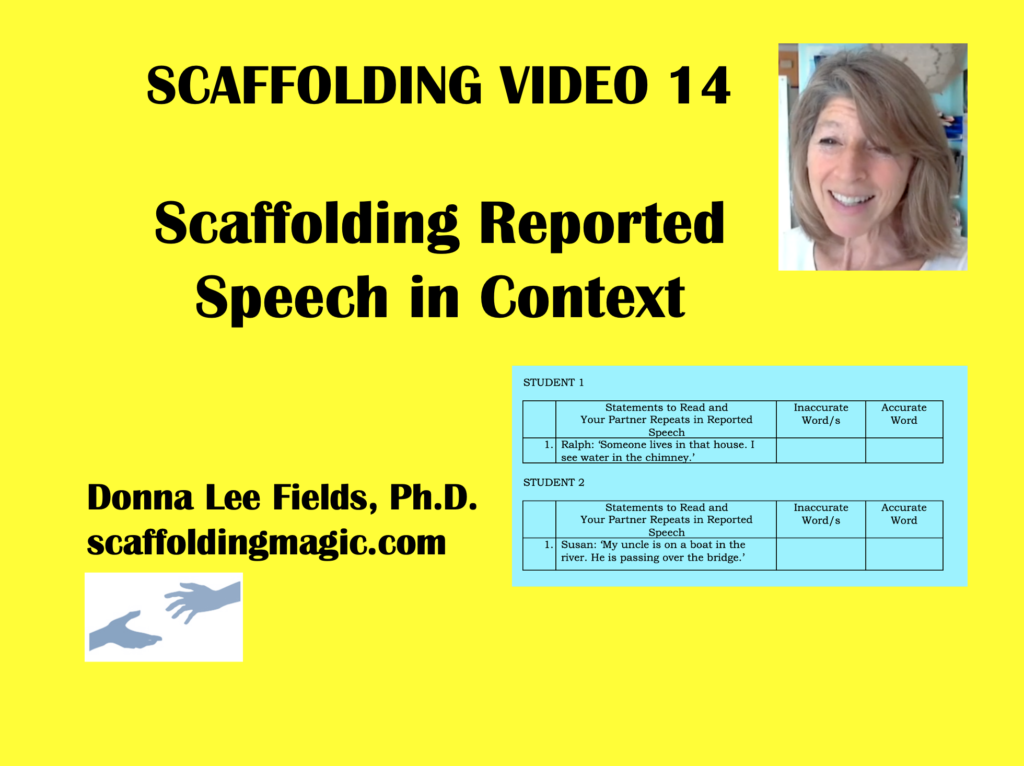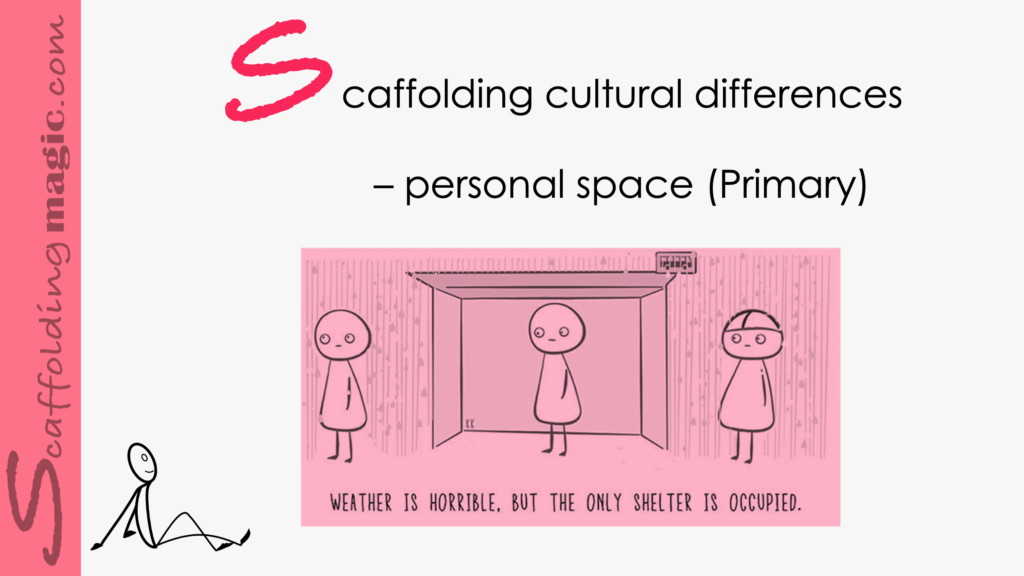You caught a beauty!!!
Download PDF of scaffold here
theory behind the scaffold…
An interesting consequence of the digital age is that speech therapists have found their work has multiplied exponentially in the past few years. They attribute this to a generation of students who spend more hours on their phones and computers, sending and reading short texts, rather than connecting verbally.
Scaffolds that offer opportunities for verbal interactions compensate for this lack. They help students to strengthen, build and diversify language as well as to use skills they might not develop by themselves.
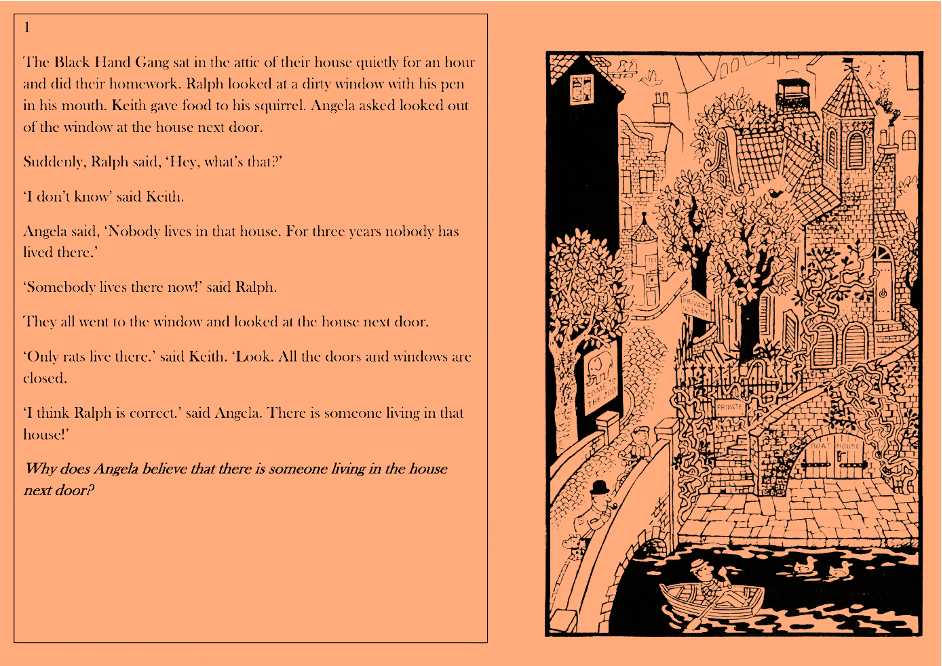
This scaffold focuses on reported speech, an essential skill in language mastery, given that it is an integral structure that we use in everyday conversation. Ironically it is also one that is often overlooked in oral activities in the classroom or one that educators find difficult to incorporate in lessons.
As scaffolding work best (as do all lessons in general) when grammar is embedded in a context (a story, a video, a podcast, instructions for an art project, etc.), this activity uses information from whatever source your students are using.
As an added bonus, whenever possible we include images so that students have even more context to process information. The example given in this scaffold is from a book that combines these three factors: verbal, linguistic and visual.
To top of this multi-layered scaffold, students not only change statements into Reported Speech, but they have to simultaneously identify inaccurate words in the statements and adjust them so that the resulting reported statement is accurate as well.
The example used in the handout is from a mystery story in which students can answer the questions the characters ask on the left-hand page by studying the image that appears on the right-hand page. The activity encourages them to use academic language as well as verbalise visual optical illusions. They also have to pay close attention to their what their partner says so that they can repeat the information in Reported Speech. In all, this activity combines a variety of important skills in a very engaging way.
step by step:
Note: These instructions use the following story; however, you can use whatever Student Book, video, podcast, laboratory instructions, sports rules, explanations of genres of music, etc., that you are about to study in your lessons.
The Black Hand Gang and the Mysterious House
- Read the statements in your chart to your partner. (See example below.)
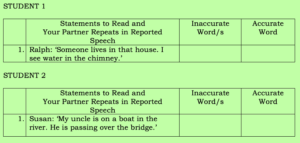
- Listen to your partner change the statements to Reported Speech.
- Ask your partner which word is inaccurate
- If you agree, write the inaccurate word in the right-hand column.
- Repeat with your partner beginning.
Example of possible dialogue.


Scaffoldingmagic.com is your entryway into DYNAMIC bilingual learning methodologies, such as Phenomenon-Based Learning, CLIL, EMI, and ESL. You’ll find ways to implement critical thinking tools (DOK) to promote higher level thinking, the growth mindset, instill an ethic of excellence, deep reflection on learning, and all through multi-cultural, interdisciplinary activities. We have the keys to turning competences into action and to creating collective efficacy in your school so you move ahead as a unified, enthusiastic team.





